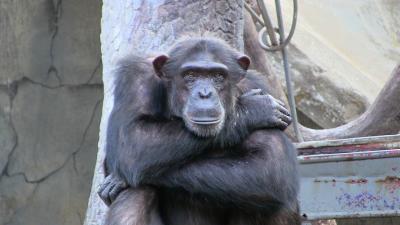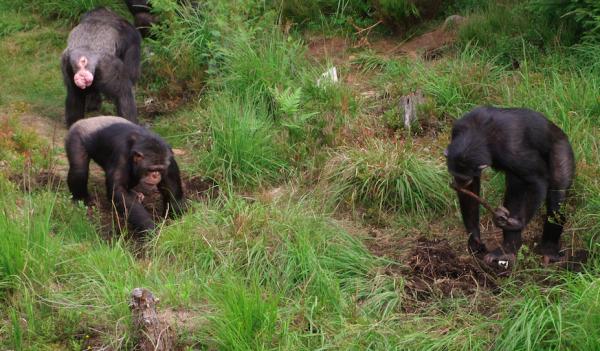Handedness and Hand preferences
Are humans the only right-handed species?

Handedness, or the consistent use of a preferred hand across individuals and tasks, is considered to be an exclusively human trait, with approximately 90% of humans being right-handed. Handedness is the result of brain hemispheric specialization, which has, in turn, been related to human linguistic functions Different factors have been suggested to affect the emergence of human handedness, such as gestural language, tool use, bipedalism, body position and coordinated bimanual actions.
Nowadays, there is an ongoing debate regarding the existence of handedness in species other than humans, with most studies focusing on primate species and particularly on chimpanzees (Pan troglodytes). These laterality studies in non-human primates attempt to unravel the pattern of emergence and development of handedness in humans in order to provide insight into the evolution of human cognition. One of the difficulties of assessing handedness in non-human primates is that few studies to date include enough tasks performed by the same individuals in order to draw conclusions about hand use consistency across tasks, which is a condition for handedness.
Due to their anatomical similarities and phylogenetic proximity to humans, chimpanzees are a suitable behavioral model for analyzing and better understanding human handedness. Furthermore, chimpanzees customarily use tools, which is relevant because tool use tasks and bimanual tasks involving tool use (in which each hand performs an independent but complementary action) have been shown to elicit stronger lateralized responses than simpler tasks.
Hand preference is the individual bias towards using one hand or limb on a single task or measure. Contrary to handedness, a plethora of studies in different species have shown the existence of hand preference in multiple tasks, and the number of studies is especially abundant regarding chimpanzees. Most of these studies focus on foraging behaviors that involve the use of tools, such as nut cracking in Taï National Park (Ivory Coast), termite fishing in Gombe National Park (Tanzania) and algae fishing in Bakoun (Republic of Guinea). Chimpanzees do not only exploit food sources that are found above ground, but have also developed different techniques to extract underground food, such as the extraction of honey from underground bee hives, the termite extraction from underground nests and the excavation of underground storage organs of plants (USOs).
The later is a particularly interesting behavior from an evolutionary point of view, as it has been hypothesized that USOs were used by early hominins as fallback foods in the initial colonization of savanna habitats in periods of food scarcity. Although digging has been reported in different populations of chimpanzees, the laterality of this behavior has only been inferred using indirect evidence (holes in dry riverbeds and tools next to holes). Digging behavior is also interesting because it occurs in two modalities: manual and tool digging. This duality allows for the investigation of the effect that tool use has in the direction (left or right) and strength of hand preference.

Responsible for this page:
Director of undergraduate studies Biology
Last updated:
